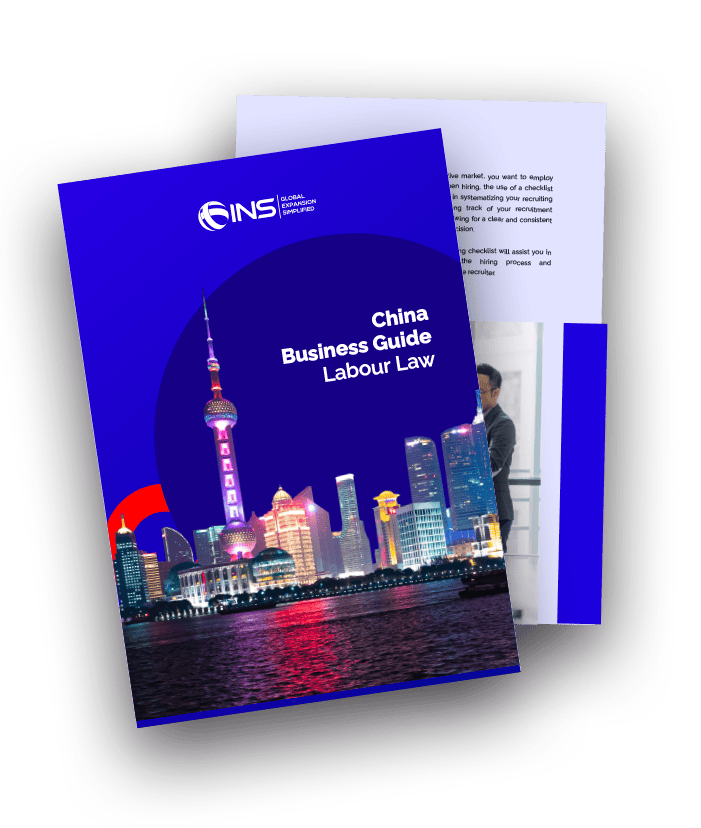The Chinese economy has entered into a time of transition. Because of higher labor cost in China, the day of the country being the “go to” market for cheap labor are largely over. However, that doesn’t mean that there are no more opportunities in this market.
Instead, it means that the international flavor of the manufacturing sector will shift more to domestic production. Additionally, the international and foreign manufacturing community are likely looking for cheaper labor elsewhere in Asia such as Vietnam and Cambodia, for example.
Note: This article was originally written in 2016.

Tired of scrolling? Download a PDF version for easier offline reading and sharing with coworkers
In a hurry? Save this article as a PDF
Tired of scrolling? Download a PDF version for easier offline reading and sharing with coworkers.
Fill up the form below 👇🏼
The Rising Cost of Labor in China
The value of doing business in China going forward will rest with gaining a greater market share of their domestic consumer market. This can be done via manufacturing goods for sale in China or even exporting to China. In some ways, places like the United States are fast approaching parity with China in terms of manufacturing costs.
In a story on November 22, 2016, a Chinese billionaire refurbished and repurposed an abandoned General Motors assembly plant to house his manufacturing operations for glass products. He quickly employed over 2000 industrial workers in Moraine, Ohio.
He cited the fact that Chinese labor costs had tripled in the four years before his takeover as the motivation for his move. The shortage of specialized labor skills in critical positions continues to fuel a similar rise.
White–Collar Job Competition by Region
Competition for white-collar jobs rose in the fourth quarter of 2016. This reveals an average of 41 applications per vacancy across China. That was an increase from the 37 and 36 of the two previous quarters.
The average monthly salary rose slightly from RMB 7,531 in the third quarter of 2016 to RMB 7,606 in the final quarter of 2016.
Beijing had the highest pay of RMB 9,835/month, followed by Shanghai at RMB 9,720, RMB 8,640 in Shenzhen and Guangzhou at RMB 7,853. Software & Internet development including system integration was the most competitive occupation at 145.1 applications per job vacancy.
The American Point of View on Labor Troubles
The cost of labor in China along with the difficulty of doing business in China and the resulting increase in investment required has led a reversal of American companies setting up shop in China.
According to Siva Yam of the Chicago-based U.S.-China Chamber of Commerce, “We have seen a lot of U.S companies struggling [with] their China. The market is much more mature. We have seen a significant drop of U.S. companies going to China. … On the contrary, they are coming back here.”
An annual report from the American Chamber of Commerce on labor cost in China found that 32 percent of member companies surveyed did not plan to expand investments, a percentage higher than during the financial crisis in 2009.
One-quarter of the respondents have moved or planned to move business operations out of China, and of that group, 38 percent are relocating to the U.S., Canada or Mexico.
Major US asset sale announcements in China 2014 - 2016
| Divestor | Target | Acquirer | Deal value $B | Date |
| Advanced Micro Devices – AMD | AMD Technologies (China) / Advanced Micro Devices Export | Nantong Fujitsu Microelectronics (52.37% / 47.63%) / Semiconductor Manufacturing International – SMIC | 0.370.37 | Oct-15 |
| Anadarko Petroleum | Kerr-McGee China Petroleum | Brightoil Petroleum (Holdings) | 1.11.1 | Feb-14 |
| BlackRock | Shopping Centers (Galleria, Chengdu) | CapitaLand Retail China Trust | 0.230.23 | Aug-16 |
| Cap-Con Automotive Technologies | Cap-Con Automotive Technologies (ARC Automotive business) | Yinyi Investment Holding | 0.490.49 | Oct-15 |
| Cathaya Capital International Finance Corp-IFC | Asia Pacific Medical (Majority %) | Bain Capital | 0.150.15 | Mar-16 |
| Citigroup (20%) / International Business Machines Corp – IBM | China Guangfa Bank (23.686%) | China Life Insurance | 3.573.57 | Feb-16 |
| Coca-Cola* | Swire Beverages (12.5%) | Swire Pacific | 0.180.18 | Nov-16 |
| Coca-Cola* | Coca-Cola (Beverage manufacturing business in China) | China Foods | 0.420.42 | Nov-16 |
| Coca-Cola* | Coca-Cola (Guangxi) Beverages / Coca-Cola (Yunnan) Beverages / Coca-Cola (Hubei) Beverages / Shanghai Shen-Mei Beverage & Food | Swire Pacific | 0.440.44 | Nov-16 |
| Expedia | eLong (62.4%) | Ctrip.com International / Keystone Lodging / Plateno / Luxuriant | 0.670.67 | May-15 |
| Hertz Global | CAR(23.97%) | UCAR Technology | 0.680.68 | Mar-16 |
| Hewlett-Packard | H3C Technologies (with server, storage and technology services businesses) | Unisplendour | 3.13.1 | May-15 |
| International Paper* | International Paper (Asia) (Corrugated packaging business in China and Southeast Asia) | Shenzhen Bridge Capital Management | 0.140.14 | Mar-16 |
| Kingston Technology | Payton Technology (Shenzhen) | Shenzhen Kaifa Technology | 0.110.11 | Jun-15 |
| KKR /CDH China Growth Capital Management | Success Diary II | China Modern Dairy Holdings | 0.250.25 | Jul-15 |
| Advanced Micro Devices – AMD | AMD Technologies (China) / Advanced Micro Devices Export | Nantong Fujitsu Microelectronics (52.37% / 47.63%) / Semiconductor Manufacturing International – SMIC | 0.370.37 | Oct-15 |
| Anadarko Petroleum | Kerr-McGee China Petroleum | Brightoil Petroleum (Holdings) | 1.11.1 | Feb-14 |
| BlackRock | Shopping Centers (Galleria, Chengdu) | CapitaLand Retail China Trust | 0.230.23 | Aug-16 |
| Cap-Con Automotive Technologies | Cap-Con Automotive Technologies (ARC Automotive business) | Yinyi Investment Holding | 0.490.49 | Oct-15 |
| Cathaya Capital International Finance Corp-IFC | Asia Pacific Medical (Majority %) | Bain Capital | 0.150.15 | Mar-16 |
| Citigroup (20%) / International Business Machines Corp – IBM | China Guangfa Bank (23.686%) | China Life Insurance | 3.573.57 | Feb-16 |
| Coca-Cola* | Swire Beverages (12.5%) | Swire Pacific | 0.180.18 | Nov-16 |
| Coca-Cola* | Coca-Cola (Beverage manufacturing business in China) | China Foods | 0.420.42 | Nov-16 |
| Morgan Stanley | Property Portfolio (Sandhill Plaza) | Mapletree Greater China Commercial Trust | 0.310.31 | Jun-15 |
| Uber Technologies* | Uber China | Xiaoju Kuaizhi – Didi Chuxing | 77 | Aug-16 |
| Waste Management | Shanghai Environment Group (40%) | Shanghai Chengtou Holding | 0.160.16 | Jan-14 |
| Yum Brands | Yum China Holdings (95%) | Existing shareholders | 9.539.53 | Oct-16 |
Source: Dealogic
Check Our China Labor Law Guide
Learn how the Chinese law is applied in all aspects and situations, from an employer and employee perspective

Final Thoughts on Cost of Chinese Labor
The Chinese labor cost issue is one steeped in the local power of the provinces and labor unions that control how things work at the local level. The PRC has no laws regarding the minimum standard wage. Provincial and municipal governments take into account inflation and cost of living indexes.
Unusually high inflation and a rising cost of living were just a few of the factors contributing to the rise in labor costs.
The Chinese Twelfth Five-Year Plan gave provinces and local jurisdiction the motivation to continue increasing wages from year to year.
As the Chinese economy continues to mature and labor unions gather more power and influence at the local level, these labor costs will continue to impact international investment in China.
INS Global is a firm that simplifies global expansion. We are a Professional Employer Organization (PEO) that will help you set up your business and recruit employees without committing to opening a legal entity abroad. More than that, we offer various services such as payroll and tax outsourcing, and compliance consulting so you can focus on growing your business.

SHARE